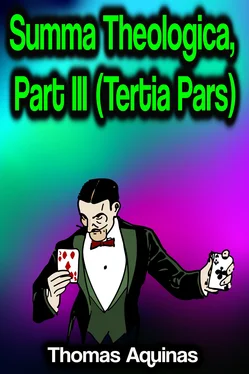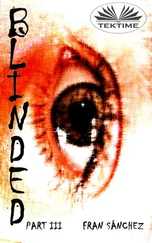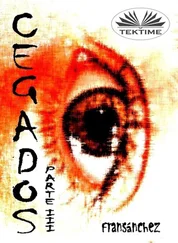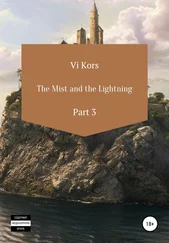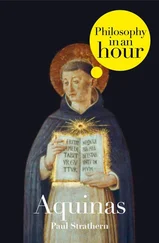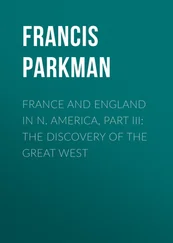Reply Obj. 2: Two things may be considered in the offering of a sacrifice by any priest—namely, the sacrifice itself which is offered, and the devotion of the offerer. Now the proper effect of priesthood is that which results from the sacrifice itself. But Christ obtained a result from His passion, not as by virtue of the sacrifice, which is offered by way of satisfaction, but by the very devotion with which out of charity He humbly endured the passion.
Reply Obj. 3: A figure cannot equal the reality, wherefore the figural priest of the Old Law could not attain to such perfection as not to need a sacrifice of satisfaction. But Christ did not stand in need of this. Consequently, there is no comparison between the two; and this is what the Apostle says (Heb. 7:28): "The Law maketh men priests, who have infirmity; but the word of the oath, which was since the Law, the Son Who is perfected for evermore." _______________________
FIFTH ARTICLE [III, Q. 22, Art. 5]
Whether the Priesthood of Christ Endures for Ever?
Objection 1: It would seem that the priesthood of Christ does not endure for ever. For as stated above (A. 4, ad 1, 3) those alone need the effect of the priesthood who have the weakness of sin, which can be expiated by the priest's sacrifice. But this will not be for ever. For in the Saints there will be no weakness, according to Isa. 60:21: "Thy people shall be all just": while no expiation will be possible for the weakness of sin, since "there is no redemption in hell" (Office of the Dead, Resp. vii). Therefore the priesthood of Christ endures not for ever.
Obj. 2: Further, the priesthood of Christ was made manifest most of all in His passion and death, when "by His own blood He entered into the Holies" (Heb. 9:12). But the passion and death of Christ will not endure for ever, as stated Rom. 6:9: "Christ rising again from the dead, dieth now no more." Therefore the priesthood of Christ will not endure for ever.
Obj. 3: Further, Christ is a priest, not as God, but as man. But at one time Christ was not man, namely during the three days He lay dead. Therefore the priesthood of Christ endures not for ever.
On the contrary, It is written (Ps. 109:4): "Thou art a priest for ever."
I answer that, In the priestly office, we may consider two things: first, the offering of the sacrifice; secondly, the consummation of the sacrifice, consisting in this, that those for whom the sacrifice is offered, obtain the end of the sacrifice. Now the end of the sacrifice which Christ offered consisted not in temporal but in eternal good, which we obtain through His death, according to Heb. 9:11: "Christ is [Vulg.: 'being come'] a high-priest of the good things to come"; for which reason the priesthood of Christ is said to be eternal. Now this consummation of Christ's sacrifice was foreshadowed in this, that the high-priest of the Old Law, once a year, entered into the Holy of Holies with the blood of a he-goat and a calf, as laid down, Lev. 16:11, and yet he offered up the he-goat and calf not within the Holy of Holies, but without. In like manner Christ entered into the Holy of Holies—that is, into heaven—and prepared the way for us, that we might enter by the virtue of His blood, which He shed for us on earth.
Reply Obj. 1: The Saints who will be in heaven will not need any further expiation by the priesthood of Christ, but having expiated, they will need consummation through Christ Himself, on Whom their glory depends, as is written (Apoc. 21:23): "The glory of God hath enlightened it"—that is, the city of the Saints—"and the Lamb is the lamp thereof."
Reply Obj. 2: Although Christ's passion and death are not to be repeated, yet the virtue of that Victim endures for ever, for, as it is written (Heb. 10:14), "by one oblation He hath perfected for ever them that are sanctified."
Wherefore the reply to the third objection is clear.
As to the unity of this sacrifice, it was foreshadowed in the Law in that, once a year, the high-priest of the Law entered into the Holies, with a solemn oblation of blood, as set down, Lev. 16:11. But the figure fell short of the reality in this, that the victim had not an everlasting virtue, for which reason those sacrifices were renewed every year. _______________________
SIXTH ARTICLE [III, Q. 22, Art. 6]
Whether the Priesthood of Christ Was According to the Order of
Melchisedech?
Objection 1: It would seem that Christ's priesthood was not according to the order of Melchisedech. For Christ is the fountain-head of the entire priesthood, as being the principal priest. Now that which is principal is not secondary in regard to others, but others are secondary in its regard. Therefore Christ should not be called a priest according to the order of Melchisedech.
Obj. 2: Further, the priesthood of the Old Law was more akin to Christ's priesthood than was the priesthood that existed before the Law. But the nearer the sacraments were to Christ, the more clearly they signified Him; as is clear from what we have said in the Second Part (II-II, Q. 2, A. 7). Therefore the priesthood of Christ should be denominated after the priesthood of the Law, rather than after the order of Melchisedech, which was before the Law.
Obj. 3: Further, it is written (Heb. 7:2, 3): "That is 'king of peace,' without father, without mother, without genealogy; having neither beginning of days nor ending of life": which can be referred only to the Son of God. Therefore Christ should not be called a priest according to the order of Melchisedech, as of some one else, but according to His own order.
On the contrary, It is written (Ps. 109:4): "Thou art a priest for ever according to the order of Melchisedech."
I answer that, As stated above (A. 4, ad 3) the priesthood of the Law was a figure of the priesthood of Christ, not as adequately representing the reality, but as falling far short thereof: both because the priesthood of the Law did not wash away sins, and because it was not eternal, as the priesthood of Christ. Now the excellence of Christ's over the Levitical priesthood was foreshadowed in the priesthood of Melchisedech, who received tithes from Abraham, in whose loins the priesthood of the Law was tithed. Consequently the priesthood of Christ is said to be "according to the order of Melchisedech," on account of the excellence of the true priesthood over the figural priesthood of the Law.
Reply Obj. 1: Christ is said to be according to the order of
Melchisedech not as though the latter were a more excellent priest,
but because he foreshadowed the excellence of Christ's over the
Levitical priesthood.
Reply Obj. 2: Two things may be considered in Christ's priesthood: namely, the offering made by Christ, and (our) partaking thereof. As to the actual offering, the priesthood of Christ was more distinctly foreshadowed by the priesthood of the Law, by reason of the shedding of blood, than by the priesthood of Melchisedech in which there was no blood-shedding. But if we consider the participation of this sacrifice and the effect thereof, wherein the excellence of Christ's priesthood over the priesthood of the Law principally consists, then the former was more distinctly foreshadowed by the priesthood of Melchisedech, who offered bread and wine, signifying, as Augustine says (Tract. xxvi in Joan.) ecclesiastical unity, which is established by our taking part in the sacrifice of Christ [*Cf. Q. 79, A. 1]. Wherefore also in the New Law the true sacrifice of Christ is presented to the faithful under the form of bread and wine.
Reply Obj. 3: Melchisedech is described as "without father, without mother, without genealogy," and as "having neither beginning of days nor ending of life," not as though he had not these things, but because these details in his regard are not supplied by Holy Scripture. And this it is that, as the Apostle says in the same passage, he is "likened unto the Son of God," Who had no earthly father, no heavenly mother, and no genealogy, according to Isa. 53:8: "Who shall declare His generation?" and Who in His Godhead has neither beginning nor end of days.
Читать дальше
